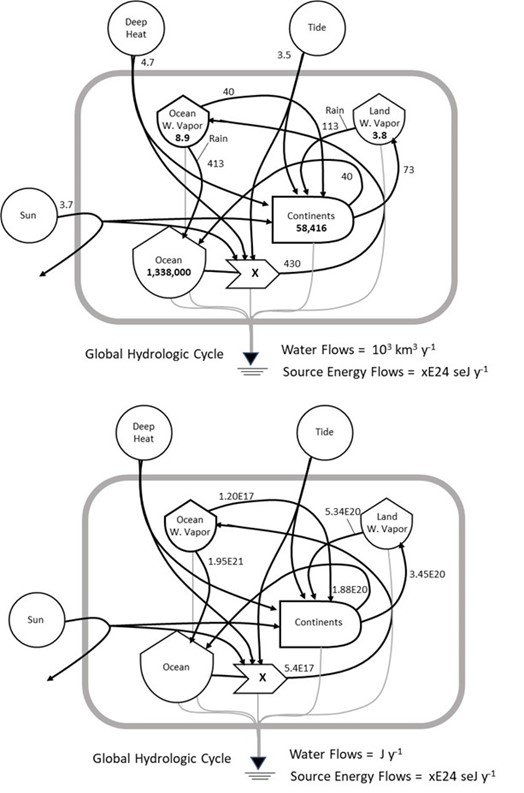UEV Library
Characterize environmental support in emergy accounting and Life Cycle Assessment
The Unit Emergy Value (UEV) Library is a simple downloadable, Excel-based tool for assessing resource use in elementary flows and storages. It provides the emergy per unit values to quantify the environmental support associated with elementary resource use in emergy accounting, LCA studies, and sustainability metrics.
- Capabilities
- Applications
- Platform & Compatibility
- Accessing UEV Library
- Companion Report
- Related Resources
- Future Updates & Support
Capabilities
The library provides emergy characterization factors (EmCFs) for 206 elementary flows of renewable energy sources, minerals and metals, land occupation, water flows and storages, biomass, soils, fossil fuels, etc.

The EmCFs rest on a common set of estimates and assumptions regarding geobiosphere processes and were calculated in a dynamic model from the ground up according to consistent algebra, rules and assumptions. The EmCF library provides a consensus set of emergy values for emergy accounting, LCA and various other analyses. Elementary flow categories include:
- Renewable Earth flows
- Water
- Singular minerals
- Multiple minerals
- Aggregate minerals
- Ocean ions
- Atmospheric gases
- Land, biomass & soil
- Wood
- Coal
- Oil & NG
- Crust element composition
Applications
UEV library can be used by emergy practitioners, researchers, sustainability decision makers, and consultants looking to evaluate total resource use and sustainability of any environmental system management.
Platform and Compatibility
UEV library is a downloadable, Microsoft Excel-based tool that can be used on desktop devices and on mobile devices, such as smartphones and tablets.
Disclaimer: This document and the database have been reviewed in accordance with U.S. Environmental Protection Agency, Office of Research and Development, and approved for publication. Any mention of trade names, manufacturers, or products does not imply an endorsement by EPA. EPA and its employees do not endorse commercial products, services, or enterprises.
Accessing UEV Library
UEV library was developed using Microsoft 365 MSO (Version 2308 Build 16.0.16731.20542).
Download the latest version: EmCF Database for LCA (xlsx)
To receive notices when UEV library is revised or updated, e-mail your name and address to emergy@epa.gov.
Companion Report
Christopher De Vilbiss, Sam Arden, Mark T. Brown, Daniel E. Campbell, Xin (Cissy) Ma, and Wesley Ingwersen. The Unit Emergy Value (UEV) Library for Characterizing Environmental Support in Life Cycle Assessment (pdf)
Related Research
Future Updates and Support
Information in the UEV will be routinely reviewed to keep it current. As resources allow, the number and the underlying calculation of elementary flows in the UEV library will be updated to expand and improve the library. We appreciate feedback for upgrades to the library.
For questions, comments, or suggestions, contact emergy@epa.gov.
